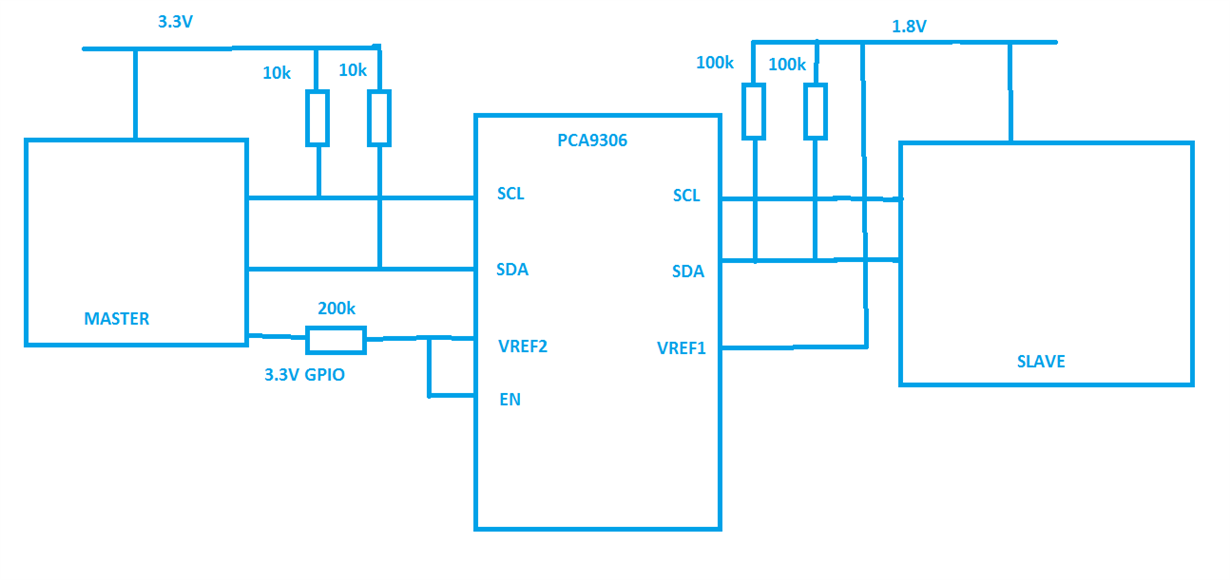Hello,
I'm having trouble using this level shifter in my design. Below is a wiring diagram for my master/slave and the PCA9306. My I2C driver on the master side is reading the state of SDA line to check if the bus is busy, and because it's idling at ~1.5V (which is < VINHmin), it sees the bus as being busy and aborts trying to send the data.
I believe I followed all of the datasheet recommendations, so I can't figure out what would cause the SDA line to idle at ~1.5V.
Regards,
Jason




